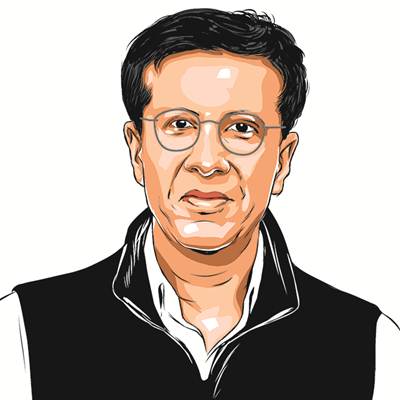Apr 14, 2025 10:44 IST
First published on: Apr 14, 2025 at 07:19 IST
The world is grappling with a labour crisis, but India’s wealth is its people. This puts India at the cusp of a unique opportunity. High-income countries are projected to face a cumulative labour gap of 40-50 million people by 2030, rising to 120-160 million by 2040. This gap spans various sectors, including industrial workers, healthcare professionals, teachers, engineers and researchers. Even currently, India’s migrants generate $125 billion or 3 per cent of the country’s GDP in remittances annually, more than any single sector of India’s merchandise exports. Yet, migrants constitute about 1.3 per cent of India’s population, substantially lower than Mexico (8.6 per cent), the Philippines (5.1 per cent), or Bangladesh (4.3 per cent). This indicates significant untapped potential for India to expand its global workforce footprint and increase its share in global circular migration flows.
Given India’s high levels of human capital and a young population seeking employment, the time has come to envision India as a global talent hub. Complementing “Make in India” with an “India for the World” programme would generate employment and leverage India’s demographic dividend. The developmental impact of remittances is also higher than that of an equivalent amount in goods exports. A study among 71 low-income nations has revealed that a 10 per cent rise in remittances reduced poverty by 3.5 per cent. By implementing a comprehensive strategy for temporary overseas employment, India can also reduce unauthorised migration routes. A well-structured system that offers legal pathways, skill development opportunities, short-term visas and financial support will discourage individuals from seeking risky, exploitative channels. Reducing illegal migration will enhance our global standing by showcasing a commitment to responsible and organised migration practices, while short-term visas and pathways for circular migration will allay fears in developed nations about migrants being on a path to citizenship.
Story continues below this ad
The US and Europe are already experiencing significant vacancies in core sectors — up to 73 per cent in truck driver positions and over 50 per cent for electrical engineers, cleaners, construction workers, and nurses in Europe. Significantly increasing the number of overseas employees would involve diversifying temporary migrant flows across Europe, the Middle East, and Southeast Asia, encompassing white- and blue-collar workers. It would require taking these seven steps.
First, India should set up an institutional framework to drive overseas employment. This involves strengthening the central department under the Ministry of External Affairs to oversee migration. The department could identify new destination markets, negotiate bilateral agreements and ensure seamless supply-demand skill matches through industry collaboration. This can be reinforced by state-level migration departments to streamline recruitment, conduct recruiter verification, protect worker welfare, and facilitate reintegration upon return. Embassies could set up migration support desks in host countries, providing on-ground assistance to Indian workers. The Philippines offers a model with the Department of Migrant Workers at the centre, state regional offices, and migrant workers offices in host countries. Second, India can look to align its skilling and accreditation systems with international standards. This would involve integrating foreign languages and global skills into education, advocating for mutual recognition agreements with key corridors and pursuing joint certifications with international institutions.
Third, India can establish financing mechanisms that ease the monetary burden on migrants. The costs associated with acquiring the necessary skills and certifications and meeting other requirements can be prohibitive for many prospective migrants — these can range from Rs 1-2 lakh for GCC countries to Rs 5-10 lakh for Europe. We can adopt the best practices from existing models such as the Philippines’ Employer Staffing Agency-Pay model, where employers or licensed recruitment agencies cover pre-departure expenses like visa fees, airfares, medical exams, training, and documentation for migrants.
Fourth, we should look at the best models of government-to-government agreements. We should try to negotiate the removal of bureaucratic visa barriers, facilitate socio-cultural integration, and reinforce the recognition of Indian qualifications. For example, the Philippines has secured agreements with over 65 countries, successfully streamlining visa processes and ensuring global recognition of Philippine qualifications. Fifth, establishing a mobility industry body to act as the voice of India’s overseas recruitment sector and facilitate government-private sector collaboration to address the current fragmentation and lack of regulation. This body can set industry standards for ethical recruitment and work to align qualifications with international benchmarks.
Sixth, we should look to establish a robust social welfare framework to protect migrant workers in the host country. Drawing from the ILO’s guidelines on migrant welfare, India can establish norms for minimum wage assurance, standardising contracts, ensuring timely salary disbursement and safe living conditions, healthcare access, legal assistance, and providing mechanisms to report workplace abuse or contract violations. Lastly, India should prioritise support for returning migrants to ensure their successful reintegration into society and the economy. Returning migrants bring valuable skills and international exposure that can significantly contribute to local development and economic growth.
Transforming India into a global talent hub is not just an economic imperative but a strategic opportunity to leverage its demographic dividend. By building a strong foundation for talent development and mobility, India can position itself as a leading supplier of skilled and semi-skilled professionals worldwide. This will not only boost remittances but also enhance India’s global influence and reputation.
Dhawan is founder-CEO and Sethi is operating partner with The Convergence Foundation















